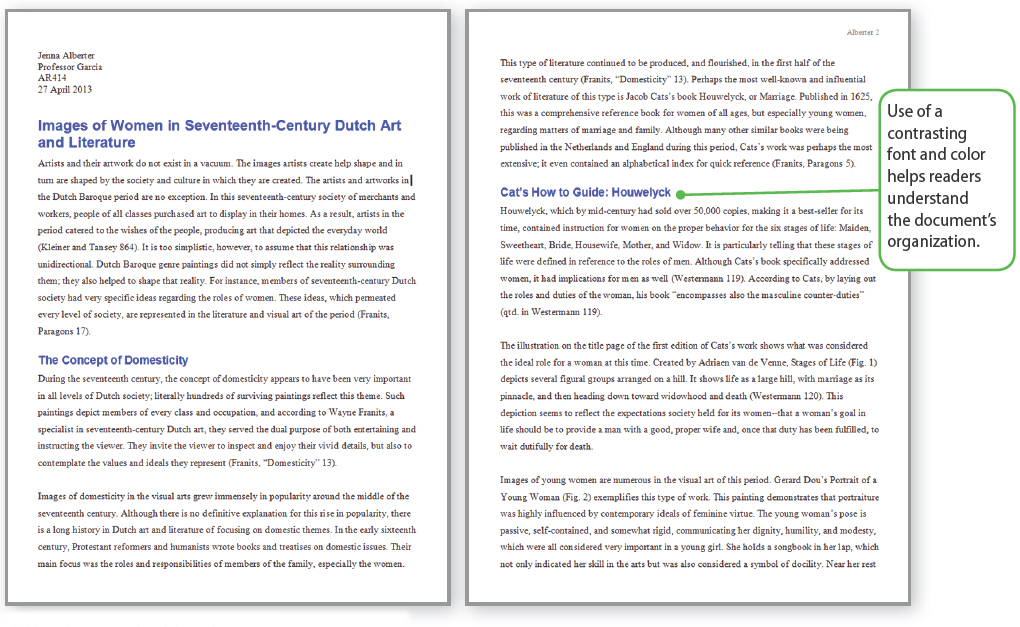Design for Your Readers
A well-designed document helps readers understand its organization, locate information and ideas, and recognize the function of its different parts. It is also easy on your readers’ eyes: readers working with a well-designed document will not have to strain to read the text or discern illustrations. Use document design to do the following.
Help readers understand the organization of a document. You can use headings and subheadings to signal the content of each part of the document. If you do, keep in mind the design principles of emphasis and consistency: format your headings in a consistent manner that helps them stand out from other parts of the document.
Help readers locate information and ideas. Many longer print documents use tables of contents and indexes to help readers locate information and ideas. Web sites typically provide a mix of menus and navigation headers and footers to help readers move around the site. You can distinguish these navigation aids from the surrounding text by using bordered or shaded boxes or contrasting fonts.
Help readers recognize the function of parts of a document. If you include passages that differ from the main text of your document, such as sidebars and “For More Information” sections, help readers understand their function by designing them to stand out visually. Using emphasis, you might design a sidebar with a shaded or colored box or format a list of related readings or Web links in a contrasting font or color.
